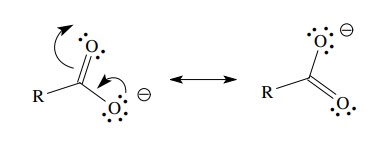Resonance Structures
| Home | | Organic Chemistry |Chapter: Organic Chemistry : Curved-Arrow Notation
Curved-arrow notation is also a very useful device with which to generate resonance structures.
RESONANCE STRUCTURES
Curved-arrow
notation is also a very useful device with which to generate resonance
structures. In this application it is truly a bookkeeping system. Since
individual canonical forms do not exist but are only thought of as resonance
contributors to the description of a real molecule, the use of curved-arrow
notation to convert one canonical form to another is without physical
significance. Never-theless it provides a useful tool to keep track of
electrons and bonds in canonical structures. For example, the structures of
carboxylate resonance contributors can be interconverted as follows:

Likewise
the Kekule´ forms of benzene can be shown:

Allyl
cations, for example, can be shown nicely while keeping track of charges,
electrons, and bonds:

Similar
considerations can be used for a variety of intermediates and structures. In
using curved-arrow notation to generate contributing resonance structures, the
same rules of valence, charge, bonding, and so on, must be applied. Given these
criteria, however, it is a straightforward exercise to generate complete sets
of resonance structures which can then be evaluated.
Related Topics
